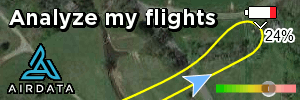St Mary’s is a parish of the Diocese of Lancaster. It is based around the villages of Broughton, Barton and Myerscough. The first church record of is a small chapel on the Hough Estate in 1731. This was replaced in 1744 by St Laurence’s New chapel. In 1805 a new church was built and dedicated to St Mary and for 100 years until 1905 this served the local Catholic community.
The present church was the gift of William Smith of Newsham House. It was consecrated in 1906 and is still at the heart of our community. It has changed over the 100+ intervening years, but its original features and interest have been largely retained.
St Mary's Newhouse R C Church is located in the suburb of Barton in Preston, England, is a serene and beautiful church known for its charming rural setting. The church is surrounded by immaculate grounds and a peaceful graveyard, inviting respectful contemplation. Inside, the simplicity of the décor adds to the church's quiet elegance. Visitors often remark on the welcoming and warm presence of the resident priest, contributing to a spiritually enriching experience.
On Sunday 15 May 2016, Bishop Campbell of Lancaster blessed a memorial at St Mary’s, Newhouse, Barton, Preston, to Thomas Haydock, publisher of the Haydock Bible, which was edited by his brother George Leo Haydock. The bishop also assisted the donor, Mr Sidney Ohlhausen (of Texas), a member of our Society and the authority on the Haydocks (see his bibliography of Thomas Haydock on this website), to unveil the memorial. It is carved from a single block of granite, was designed by Mr Edward Holden, RIBA, and the project was organised by Mr John Bleasdale, supported by the parish priest, the Rev. Canon Tim Sullivan.
The Latin quotation – Tristitia vestra in vertetur in gaudium - is the Haydock family motto, and means ‘Your sorrow will be turned into joy’ (John 16.20).
Thomas Haydock's most important publication was his great folio Bible. This project took from 1811 to 1814. As were many editions of the Bible at the time, Haydock’s was published and sold by subscription, a few leaves at a time, in fortnightly “numbers.” Subscribers would accumulate the numbers and ultimately have the completed Bible bound. As the Bible progressed, new general title pages were issued in 1811, 1812, and 1813, showing variously Thomas Haydock’s Manchester or Dublin locations. Most copies of the complete Bible would include leaves published from both locations.
The Roman numerals on the stone represents the number 1806., presumably the year one year on from when the church was built (maybe when it was completed?)








